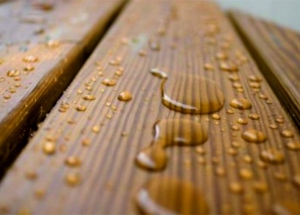The renovation is finished, the house is beautiful and clean. The hosts arrange furniture, cover the carpets and here get an unpleasant surprise. The new floor of a parquet board or a laminate is spoiled by ugly slots, and sometimes the planks are raised by a mountain and arched by a "boat". How to avoid these troubles, let's try to find out in this article.
Content
What is laminate and parquet board
Wooden floor is a thing of the past. Laminate and parquet board came to replace the tree.
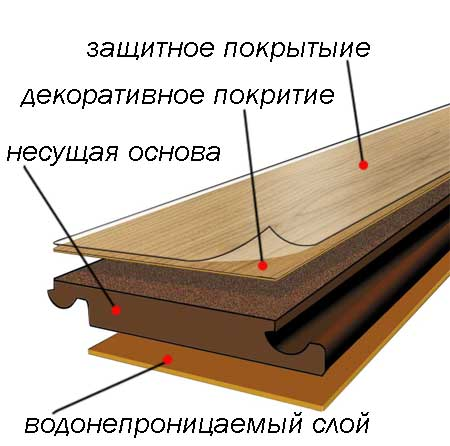
Modern floor coverings from a laminate and a parquet board are a layered material.
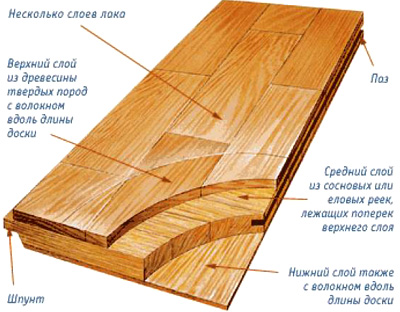
Given that the laminate and parquet board includes natural wood, respectively, these bars can vary depending on humidity and temperature.
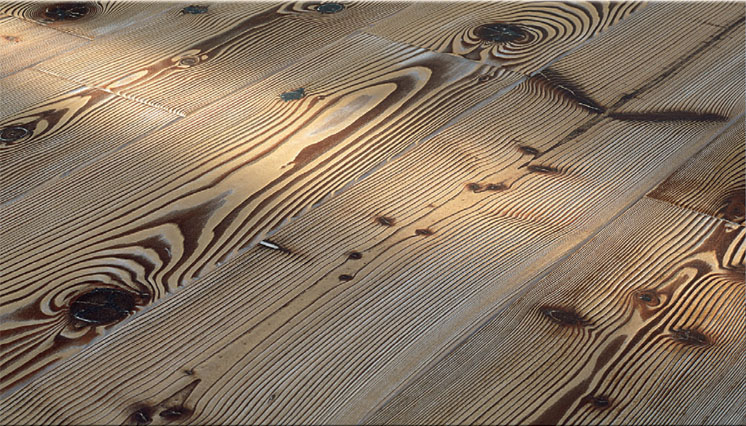
Of course, the parquet board and the laminate are less susceptible to humidity and temperature than a piece of solid wood, but under certain high humidity conditions, the parquet board and the laminate are able to change their geometric dimensions.
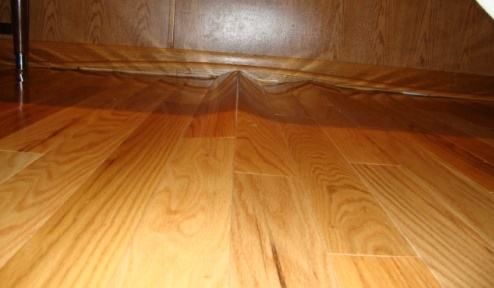
Based on practice, experts came to the conclusion that the poor quality of sex leads to only two reasons.
The first reason is the covering of wood and wood-based particles on a poorly dried substrate.
The second reason is the moment of non-observance of the temperature and humidity in the room where the flooring is made.
However, it is possible to name also the third reason is a low qualification of workers on laying of floor coverings.
The first error when laying flooring from laminate and parquet board
If there is a question about the repair of the floor, then we are doing major repairs or building a new house.
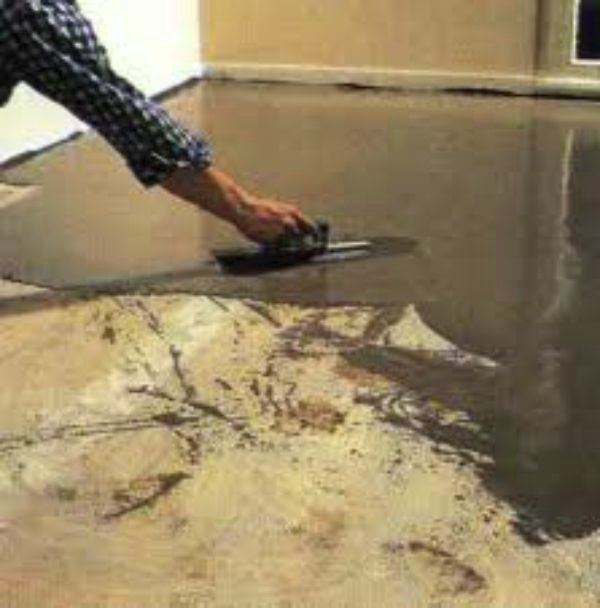
Before flooring, it is necessary to align the base with self-leveling compounds. Such work, first of all, is connected with water, since only water can give the working mixture mobility.
The hardening of the finish coat occurs during the evaporation of water.
This process is lengthy.
It does not seem to the specialist that the coating becomes dry quite fast, and this is a fatal error. It should be borne in mind that one centimeter of cement screed, having a thickness of 4 cm, dries up in a week.
The following, deeper layers, dry out within two weeks (every centimeter).
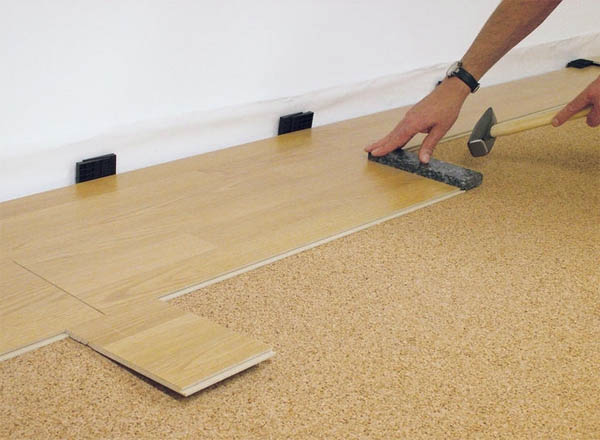
Of course, the drying time can vary and depends on the material and the height of the flooring layer.
If the cement base is not completely dry, the moisture that has not evaporated will get to the finish coat.
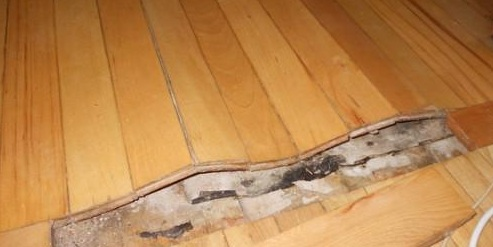
The result of this rush is the swelling of the base from the laminate. A base laminate is made of wood-fiber board. The edge of the plate from the laminate will rise, and may completely exfoliate.
If a parquet board is laid on a damp cement floor, depending on the number of strips, the edges of one-side slats will bend, and in the three-striped layers, an upper decorative layer may peel off.
How to find a way out of the situation, how to avoid trouble?
The answer is simple - do not rush.
The new house is heated and ventilated for a month, thus reducing the humidity in the room.
Before laying the floor covering, the base must be flat, firm, clean, and most importantly - dry.

To determine the amount of moisture in the substrate, and it should be no more than 2% -3%, - use a moisture meter.
Be sure to pay attention to the manufacturer's instructions for your specific material. Do not discard the instructions together with the packaging, as following the instructions in this manual, you will be able to avoid major problems.
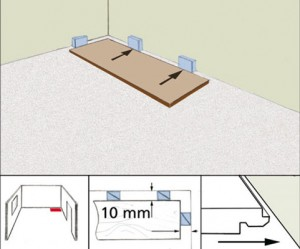
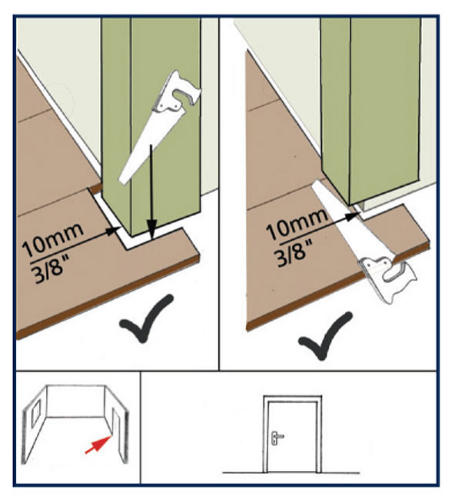
Council owner - personally control the process of packing, so as not to spend money on re-purchased materials and do not shift the floor again.
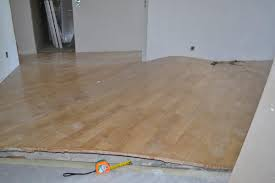
You should keep in mind that the manufacturer's warranty will only be valid if all the instructions for laying and maintenance of the floor covering have been met.
The second error when laying the floor from a parquet board or a laminate
Laying flooring involves a major overhaul or a large amount of repair work.
The scope of work includes priming, plastering, puttying of walls and ceiling, painting of walls or a wallpaper sticker.
The whole amount of work is a so-called "wet" affair.
The humidity in the room goes off scale and if you start to floor the floor, wood-based floor coverings - the result of the work is negative.
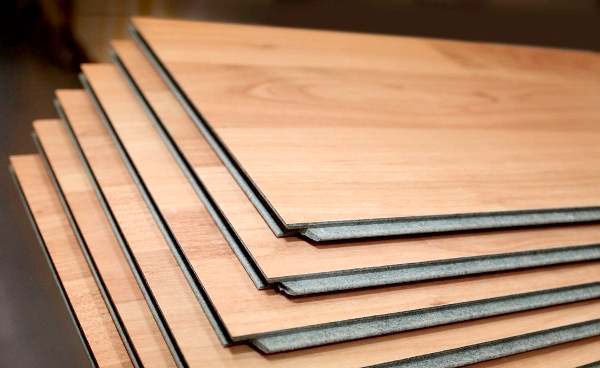
The instructions advise the floor covering to acclimatise and you deposit the packaging with a parquet board or laminate, in your own home, without thinking about the high humidity in this room. After a day or two, start laying the floor covering. We got the floor - "sweetie", and after a month or two, the humidity in the room comes back to normal, the flooring gives away excess moisture and dries. And what do we have as a result? Ugly floor and ugly cracks.
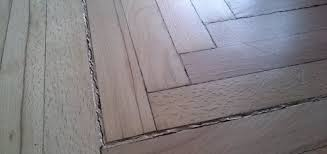
And if the floor covering has not passed acclimatization and it was laid in a room with high humidity, that floor covering will absorb excess moisture from the air, they will increase in volume and deform.
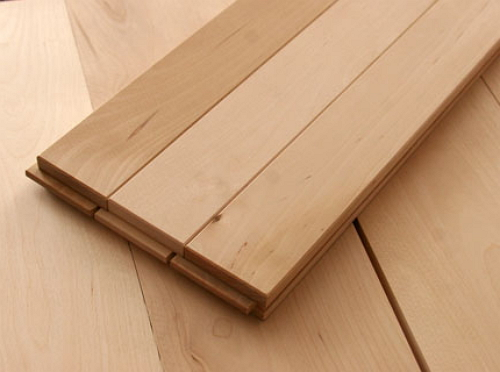
If the work was done at low humidity, the bars will gradually shrink and the same slots will appear as a result.
And it is not a fact that when the humidity of the temperature changes, everything will return to its original form.
Professionals advise:
- lay the floor covering of wood after finishing all the finishing works;
- between the floor material and the wall, be sure to leave a gap, along the entire perimeter of the room;
-The conditions in the room should be close to normal;
-the air temperature must be above + 18 * C;
- the temperature of the substrate must be above + 15 * C;
-relative air humidity should be within 40-60%;
-if there are a lot of wooden furniture in the house, a wooden floor, then at the end of the repair, maintain a constant humidity and temperature;
- During the heating season, switch on the humidifier;
-Remember that the natural tree is subject to the laws of nature.


